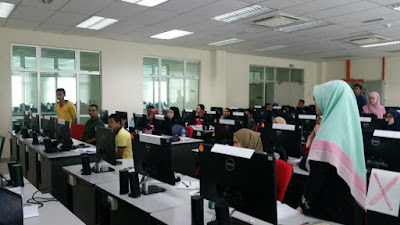Hye what’s up guys? It’s
me again here. How you’re doing? Everything okay? Today I would like to talk
about OBIEE. What is OBIEE? It is a reporting tool used to develop and access
the reports, also known as Oracle Business Intelligence Enterprise Edition
which had been included in my syllabus during the 3 months training with VTC
Holding and has been covered by Sin Hui at the end of third week of first month
for 5 days.
So basically, what is OBIEE? It is
a portfolio of technology and applications that provides the industry’s first
integrated, end-to-end Enterprise Performance Management System, including BI
foundation and tools. OBIEE provides user the data and tools to answer
questions that are important to running the part of the business for which they
are responsible. In my syllabus, we learned 11g version of OBIEE which is a
comprehensive business intelligence platform that delivers a full range of
analytic and reporting capabilities.
There are number of capabilities within the OBIEE 11g suit such as
role-based dashboards, proactive alerts, mobile access, integration with
Microsoft Office (Word, Excel), logical view of data, and multiple data
sources. Four products included in the OBI installation package are OBIEE, OBI
Publisher, OBI Add-in for MS Office, and OBI Administration Tool. There are
steps that needs to be followed to setup OBI products, if user failed or missed
1 step, they will face some error and need to start again.
To start using OBIEE, user need to start the Oracle database first step
by step using Oracle Virtual Machine that was installed on week 1. Some of the
steps are entering command “.oraenv”, “orcl”, and login to the database by
entering “sqlplus / as sysdba” and then start the database by typing “start”. After
that the user can start the OBIEE with the following steps; start the weblogic
first by changing to the required directory and command “./startWebLogic.sh”
followed by Node Manager, Managed Server, Oracle Process Manager and
Notification server (OPMN) as the steps has been given in the slide provided by
the trainers. While if the user wants to stop the OBIEE, they need to do the
same steps as starting the OBIEE but reverse from OPMN to weblogic.
Those steps are provided for those who want to start and stop OBIEE from
the terminal command in Oracle Virtual Machine, but there are also some steps
can be done from a web based application called Enterprise Manager (EM) 11g Fusion
Middleware Control, as it can do more task rather than start and stop OBIEE
only. By default, the EM link provided will be http://<host>:7001/em
unless user change it. Different with EM link, the default OBIEE link is http://localhost:9704/analytics and
enter user ID and password given by administrator.
Once user logged into the OBIEE server, they may be start to make a
report requested by client by navigating to New Analysis and pick the subsequent
subject area that will be used to make the report. User may display the report
by using normal table, pivot table, narrative view, graph view, ticker view,
view selector view, or column selector view based on the requirement.


